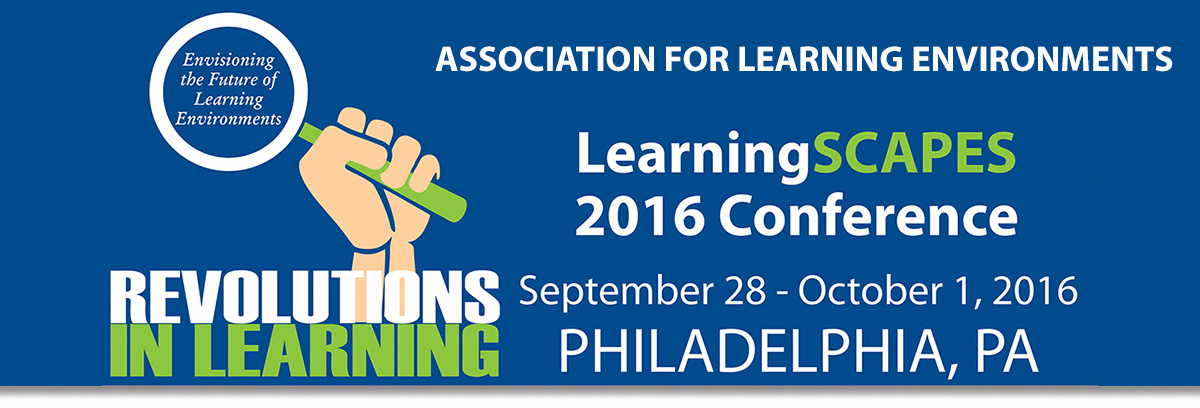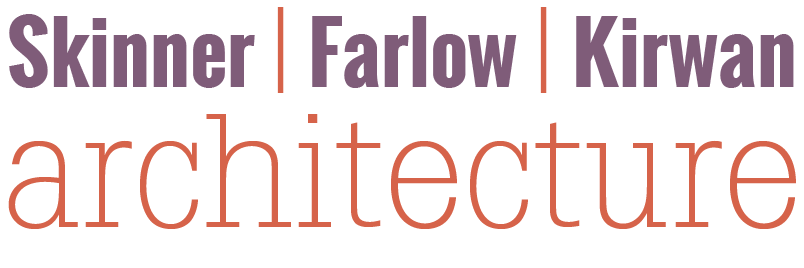Revolutions in Learning - A4LE Conference in Philadelphia, PA
 David Henebry, AIA, ALEP attended the A4LE Annual Conference in Philadelphia from Sept 28-Oct 1, 2016. The conference was titled “Revolutions in Learning”. While there David was able to meet some of the finalists for the MacConnell Award. After spending substantial hours as a juror reviewing the great submissions, he was interested to hear the Architects talk about their projects. The finalists included Robert R. Shaw Center for S.T.E.A.M by Stantec, Cherry Crest Elementary by NAC and the winning submission Fairchild High School by JCJ Architecture. The community commitment to construct a pure project based lab school in the center of their community to be accessible by all of the schools in the Katy Texas school District was extremely impressive. The students arrive early and have to be chased out in the late evening 7 days a week, demonstrating student engagement at levels most communities would envy. The Cherry Crest Elementary in Bellevue Washington captured the spirit of the natural surroundings and has taken outdoor learning to new levels. The interplay and connectivity to the outdoors along with the project based learning studios on the interior of the school provide for very pleasant and engaged learning. Cherry Crest also did an exceptional job of integrating solar and other green features into the building as teaching opportunities. The MacConnell Award winner is a great community story. It was a 10-year journey for a new High School in the poorest district in Connecticut. The STEM High School has 3 themed academy learning communities. Information Technology and Software Engineering, Biotechnology Research and Zoological Sciences and Aerospace/Hydrospace Engineering and Physical Sciences comprise 3 distinct academies of choice for students. The students are also allowed to switch academies. The 3 academies are broken up into 6 collaborative/flexible learning suites. Along with using the outdoor wooded area as a natural learning lab they maintain a bee hive on the green roofs. Of all of the sustainable features are integrated into the curriculum. They have both solar and wind green power features integrated and expressed in the architecture. Though the most impressive statistic was improving the graduation rate from 65% - 98%!
David Henebry, AIA, ALEP attended the A4LE Annual Conference in Philadelphia from Sept 28-Oct 1, 2016. The conference was titled “Revolutions in Learning”. While there David was able to meet some of the finalists for the MacConnell Award. After spending substantial hours as a juror reviewing the great submissions, he was interested to hear the Architects talk about their projects. The finalists included Robert R. Shaw Center for S.T.E.A.M by Stantec, Cherry Crest Elementary by NAC and the winning submission Fairchild High School by JCJ Architecture. The community commitment to construct a pure project based lab school in the center of their community to be accessible by all of the schools in the Katy Texas school District was extremely impressive. The students arrive early and have to be chased out in the late evening 7 days a week, demonstrating student engagement at levels most communities would envy. The Cherry Crest Elementary in Bellevue Washington captured the spirit of the natural surroundings and has taken outdoor learning to new levels. The interplay and connectivity to the outdoors along with the project based learning studios on the interior of the school provide for very pleasant and engaged learning. Cherry Crest also did an exceptional job of integrating solar and other green features into the building as teaching opportunities. The MacConnell Award winner is a great community story. It was a 10-year journey for a new High School in the poorest district in Connecticut. The STEM High School has 3 themed academy learning communities. Information Technology and Software Engineering, Biotechnology Research and Zoological Sciences and Aerospace/Hydrospace Engineering and Physical Sciences comprise 3 distinct academies of choice for students. The students are also allowed to switch academies. The 3 academies are broken up into 6 collaborative/flexible learning suites. Along with using the outdoor wooded area as a natural learning lab they maintain a bee hive on the green roofs. Of all of the sustainable features are integrated into the curriculum. They have both solar and wind green power features integrated and expressed in the architecture. Though the most impressive statistic was improving the graduation rate from 65% - 98%!
